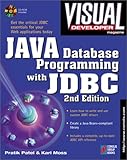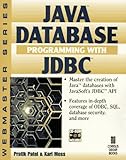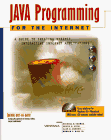Pratik Patel
Developer Advocate @ Azul Systems
Pratik Patel is a Java Champion and developer advocate at Azul Systems and has written 3 books on programming (Java, Cloud and OSS). An all around software and hardware nerd with experience in the healthcare, telecom, financial services, and startup sectors. He's also a co-organizer of the Atlanta Java User Group and North Atlanta JavaScript meetup, frequent speaker at tech events, and master builder of nachos.Presentations
Developer guide to the cloud
8:30 AM MDT
There's a ton of options for deploying to the cloud right now. Heroku and Engineyard are among the well known Platform as a Service (PaaS) providers. What if you don't want to use these PaaS services? What if you don't know which one is better? Are they cost effective? What about private deployments into internal infrastructure? This session answers these questions with a discussion of PaaS services and setting up your own PaaS using CloudFoundry.
There's a ton of options for deploying to the cloud right now. Heroku and Engineyard are among the well known Platform as a Service (PaaS) providers. What if you don't want to use these PaaS services? What if you don't know which one is better? Are they cost effective? What about private deployments into internal infrastructure? This session answers these questions with a discussion of PaaS services and setting up your own PaaS using CloudFoundry.
Mobile Performance Tips n' Tricks
5:00 PM MDT
Creating a web site, web app, or native app for mobile use presents a special set of challenges. Specifically, developers and designers should be zoned into the techniques for usability - and usability can be enhanced greatly by taking performance elements into consideration up-front.
In this session, we explore the many performance tips and tricks you can employ to make your website or web app or native app shine on mobile devices. This is an advanced course that discusses issues such as image loading, JavaScript performance, and wireless latency.
Creating a web site, web app, or native app for mobile use presents a special set of challenges. Specifically, developers and designers should be zoned into the techniques for usability - and usability can be enhanced greatly by taking performance elements into consideration up-front.
In this session, we explore the many performance tips and tricks you can employ to make your website or web app or native app shine on mobile devices. This is an advanced course that discusses issues such as image loading, JavaScript performance, and wireless latency.
Apponomics
8:30 PM MDT
You've got a great idea for a mobile app. You have a team together. You're building the killer app. Do you know enough about the various app stores to know what to do next? How about pricing strategies for iOS and Android? Have you thought about the Nook Color and Amazon Fire? In this session, I'll bring my experience as CTO of TripLingo, an awesome company developing foreign language learning apps. TripLingo has been featured on the iOS store a dozen times, as well as the Android market and Nook store.
You've got a great idea for a mobile app. You have a team together. You're building the killer app. Do you know enough about the various app stores to know what to do next? How about pricing strategies for iOS and Android? Have you thought about the Nook Color and Amazon Fire? In this session, I'll bring my experience as CTO of TripLingo, an awesome company developing foreign language learning apps. TripLingo has been featured on the iOS store a dozen times, as well as the Android market and Nook store.
Mobile Development Options 2014
5:00 PM MDT
There's a bevy of options for developing mobile apps. If you're looking at cross-platform solutions, there's a multitude of options to choose from. In this session we'll explore the three basic categories for developing mobile apps: native, cross-platform-to-native, and mobile web. We'll discuss the sweet spot for each of these three approaches and the benefits and drawbacks of each. Technologies discussed include Android, iOS, HTML5/CSS3, Phonegap, Titanium, and jQuery Mobile.
There's a bevy of options for developing mobile apps. If you're looking at cross-platform solutions, there's a multitude of options to choose from. In this session we'll explore the three basic categories for developing mobile apps: native, cross-platform-to-native, and mobile web. We'll discuss the sweet spot for each of these three approaches and the benefits and drawbacks of each. Technologies discussed include Android, iOS, HTML5/CSS3, Phonegap, Titanium, and jQuery Mobile.
Advanced JavaScript for Java Devs
9:00 AM MDT
So you think you've picked up enough JavaScript to be dangerous, but feel like the whole prototypical language thing is still a mystery. In this session, we'll go from basic JavaScript to advanced JavaScript. We'll discuss and code modular JavaScript with CommonJS. We'll look into the details of a prototype language and discuss things like parasitic inheritance. We'll also look at JavaScript libraries that will help you get the most out of JavaScript - not jQuery, but a library like UnderscoreJS and SugarJS.
This is a fast paced session meant to bring you up to speed with the latest and greatest JavaScript techniques and tools. Whether you're building client side JavaScript with HTML5 or Appcelerator Titanium, or server-side JavaScript with node.js, you'll come away with knowledge and patterns for how the pro's use JavaScript for building real apps.



